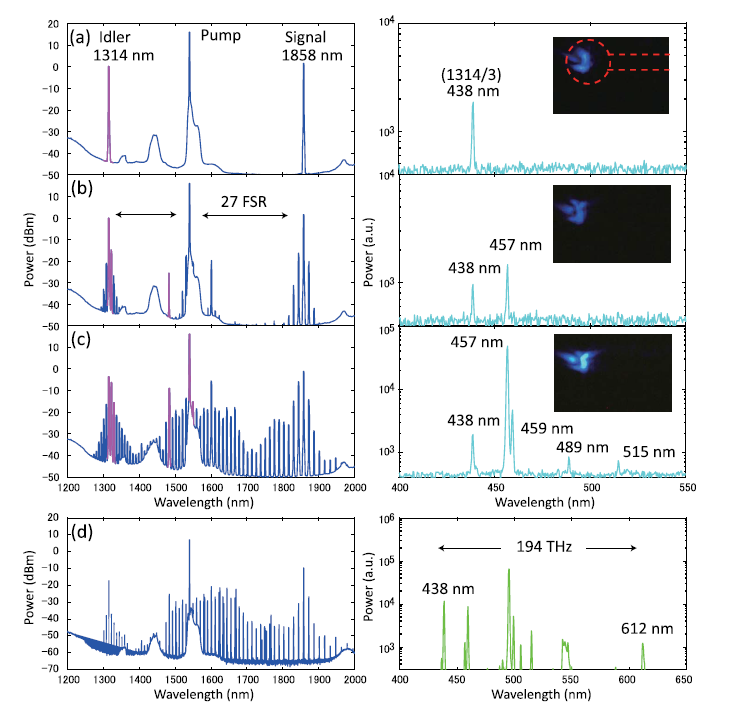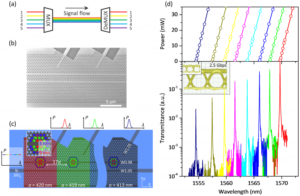Generation of blue light by third harmonic using dispersion-controlled micro optical resonators
Research
Generation of blue light by third harmonic using dispersion-controlled micro optical resonators
Proposal of a method to reliably generate targeted visible light wavelengths
What we perceive as "color" is closely related to the wavelength of light. The wavelengths that we can perceive are limited to the range of 400~800 nm (1 nm is one billionth of a meter). (1 nm is one billionth the length of 1 m.) Of course, radio and cell phone waves can also be considered waves, but they have wavelengths on the cm to m order and cannot be perceived by the human eye.
This time, we presented a method to generate visible light (visible light) at a target wavelength with a target efficiency using a device called a silicatroid resonator fabricated from glass. The original light input to the resonator is a laser light of about 1550 nm, which is an invisible light mainly used for optical communications. However, it can be converted to visible light by wavelength conversion (third harmonic generation) in the resonator. Although there have been attempts to generate visible light using third harmonic generation, the wavelengths generated have been limited to green to red.
By optimally designing the resonator structure and resonance mode (light path), we have confirmed the generation of blue light at a wavelength of 438 nm, which has been difficult to generate until now. The experimental results are shown in Figures (a), (b), and (c). We have also demonstrated that the wavelength of the generated light can be strictly controlled by taking dispersion (wavelength dependence of the refractive index perceived by light) into account. As mentioned above, our previous studies had already observed the green to red wavelengths, so we could not use the [http://www.phot.elec.keio.ac.jp/ja/research2016_11/] It can now be said that almost all of the visible light band can be generated using wavelength conversion in micro optical resonators. [Figure (d)]
Since micro optical resonators are very small devices (approximately 50 micrometers in diameter) that can be integrated on a chip, they are expected to be used as ultra-compact wavelength converters and visible light sources in the future.

- Categories
- 研究トピックス



